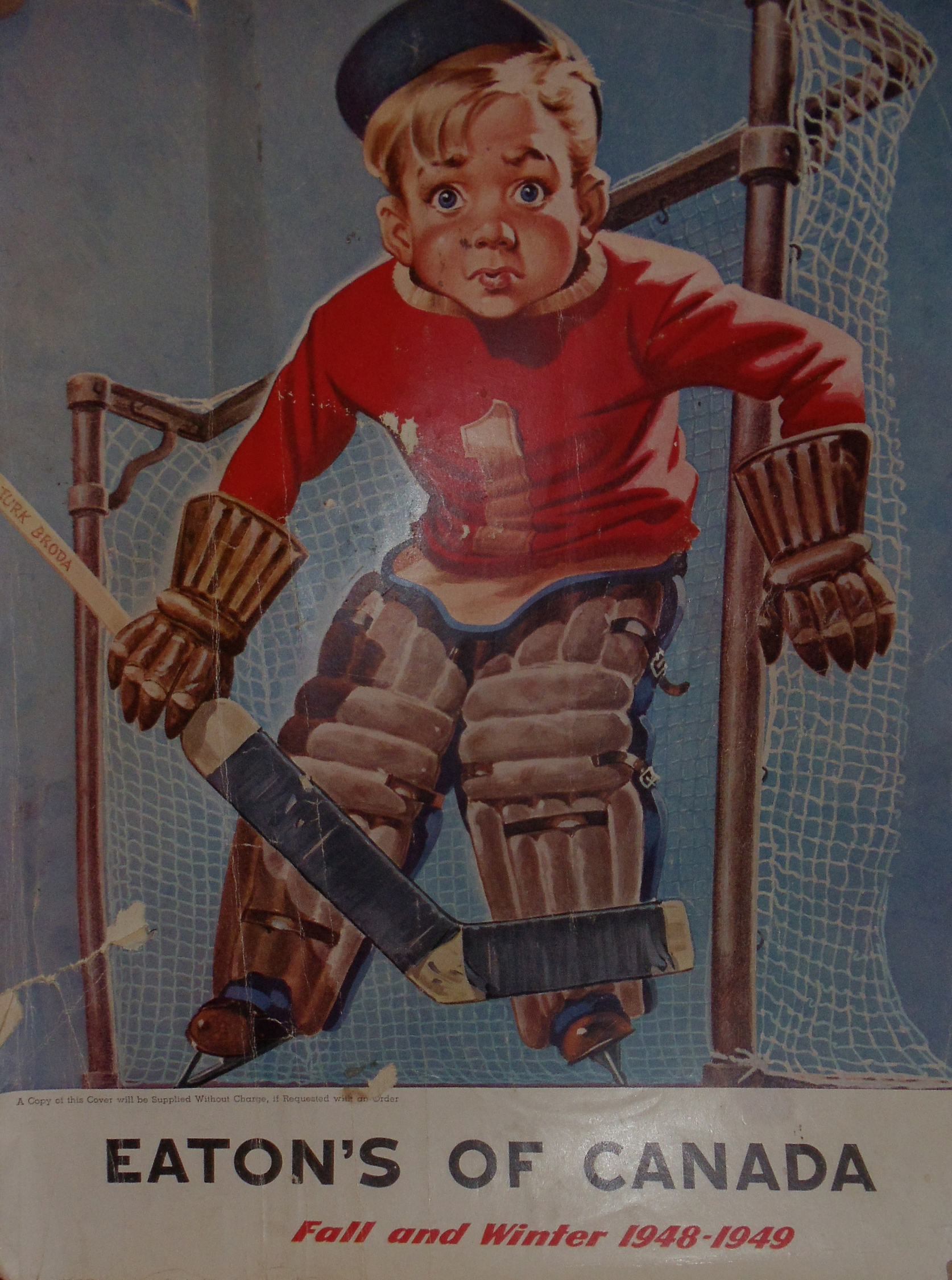 Every so often we receive gifts that are extraordinarily special, and many of the most appreciated don’t come with a hefty price tag. They usually come from very special people.
Every so often we receive gifts that are extraordinarily special, and many of the most appreciated don’t come with a hefty price tag. They usually come from very special people.
Some of my gifts this year were the much treasured photo album my sister Sharon gave me on my birthday, an unforgettable week with our grandson Cameron this summer and most recently, a prized book from [Lake Country pioneer] Anne Land. The book was the 1948-49 Eaton’s catalogue and it has provided a most enjoyable trip down memory lane.
Within those 577 pages is a remarkable snapshot of life in Canada fifty* years ago. Each page is packed with a myriad of products far, far more than any contemporary catalogues offer. It’s like receiving catalogues from Sears, Canadian Tire, Princess Auto and a few others, all in one. I would guess that there were few things used in the average home that could not be ordered by mail, and given the substantially rural nature of Canada then, it’s easy to understand the importance of this big, colourful book.
It tells a tale of a much simpler lifestyle. Items on offer include cream separators, feed grinders, wire fencing and everything needed to build a hay wagon or horse drawn sled. Most of the basics for mom’s medicine cabinet are offered as are complete kitchens, sink included. Notably absent are any form of electronic gadgets (television was years away) and most of the convenience items we now take for granted.
Back then the catalogue was a “wish book” for everyone in the family, but things were not cheap. It makes me realize why Santa’s bag of gifts was smaller then. Most kids today have Christmas lists that previous generations could not have envisioned. Economics have changed, big time. As best I can gather from Statistics Canada, family income at the end of the 1940s, with a “stay-at-home” mom, was in the area of $100.00 per month. An average wage earner today brings home $2,600.00 per month* and increasingly, there are two “bread winners”.
No one would suggest that the comparison could be made so simply, but for fun I’ve created a Christmas wish list buying items from the old catalogue but using a multiple of “twenty” to reflect today’s pricing. It makes me understand why most families didn’t have a fraction of what are now considered necessities. Here are some of the “updated” prices.
Let’s shop for mom first:
A Sunbeam mixer for $1,120.00; a nice bathrobe for $320.00; a winter cloth coat for $900.00 or perhaps a lovely watch…the wind-up kind…ranging from $260.00 to $800.00.
For Dad let’s check out these:
A decent suit was $1,000.00; a sweater for $100.00 or a topcoat at a reasonable $700. 00. How about a slide action shotgun for $2,300.00?
Junior would love:
A new pair of CCM hockey skates (one of my favourite Christmas gifts ever) for $480.00; maybe a Lionel electric train for a paltry $800.00 or, here’s a bargain, a $20.00 Monopoly game. Yes, it’s been around that long. I guess the CCM 3 speed bike might not fit the budget at $1,360.00.
Sis has on her list:
“Electronics’ this year, so we’ll add a single speed, mono gramophone to her list for $440.00 or a basic mantle radio for $700.00. Instead of her own computer how about a nice manual typewriter for only $1,500.00?
I think you get the idea. “Stuff” wasn’t cheap. On the practical side a pop-up toaster was $740.00; a kitchen stove ( wood burning) was $2,000.00; a “state of the art” wringer washer even more. A refrigerator was actually priced at $298.00 which is an astronomical $5960.00 using our factor. So much for the “good old days” and small wonder that we appreciated gifts so much more back then.
Thankfully the best gifts in life of family, friends, good health and good memories still can’t be purchased from a catalogue, the mall or on the Internet. They’re still free.
*Note: this article was written in 1998, so the snapshot that Richard describes is actually sixty-five years ago.
By: Rich Gibbons







Brian
Using https://www.bankofcanada.ca/rates/related/inflation-calculator/ $1 in 1948 is ~$13 in 2022. So maybe 20X is a bit too much.
Reg Volk
Pond goalie was not fun with just a couple, tightlystrapped on, Eatons catalogues to protect shins. Cold pucks were bloody hard and feet even colder! Lots of lost pucks in snow banks. Duck or Wood Lake nust have hundreds of them!